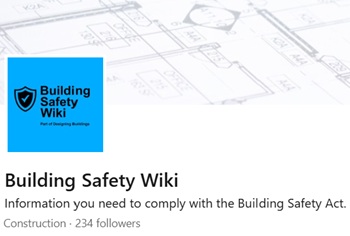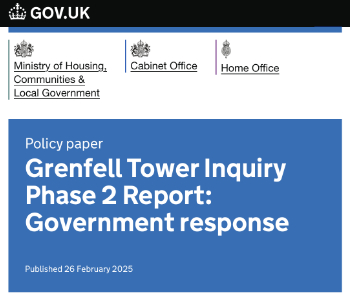Dilapidations
Dilapidations are breaches of leases due to the condition of the property being leased, either during or at the end of the lease period. This may result from mistreatment of the property or poor or absent maintenance or repairs that are required by the lease. Further work may also be required at the end of a lease to reinstate alterations that have been made to the property by the tenant.
Tenants should be clear about their responsibility for dilapidations and reinstatement when signing a lease or carrying out alterations and should budget and account for any necessary works during the course of the lease. If they fail to do this they face the prospect of unexpected, or unaffordable works, or having insufficient time to carry out the works before the end of the lease.
If the required works are not carried out, the landlord may issue a schedule of dilapidations, or a notice to reinstate near the end of the lease (or an interim schedule during the course of the lease).
If dilapidations works are not carried out by the end of the lease, the landlord may claim damages from the tenant (a terminal dilapidations claim). This may take the form of a ‘quantified demand’ setting out details of the landlord’s losses as a result of the dilapidations, which may include loss of rent due to repairs being carried out. However, the landlord cannot profit from this claim, so if for example the landlord does not intend to reinstate the property, this must be taken into account.
These issues may result in a period of negotiation between the tenant and landlord in an attempt to agree a settlement figure. If the negotiation process fails then alternative dispute resolution or court proceedings may be necessary.
The valuation of works required, or the loss of value to the property can be complex calculations, and so both parties may wish to appoint surveyors to offer advice and prepare the appropriate documentation. Further specialist advice may be necessary for complex components or aspects of a property, such as building services plant. Court proceedings may also involve expert witnesses.
A ‘Pre-Action Protocol for Claims for Damages in Relation to the Physical State of Commercial Property at Termination of a Tenancy’ (the 'Dilapidations Protocol') is available from the Ministry of Justice. This describes the conduct the court expects the parties to follow before commencing proceedings, setting out a process and timetable for the exchange of information, and establishing standards for the content and quality of schedules of dilapidations and quantified demands.
There is a separate Pre-Action Protocol for Housing Disrepair cases.
[edit] Related articles on Designing Buildings
- Alternative dispute resolution.
- Betterment.
- Break clauses in leases.
- Decay.
- Dilapidations claim.
- Deterioration.
- Dilapidations protocol.
- Forensic engineering in developing countries.
- Lease Negotiations - Tenants Checklist.
- Licence for Alterations for Apartment.
- Licence to alter.
- Opening up works for inspection and testing.
- Payment for dilapidations.
- Quantified demand.
- Rent-free period.
- Rent in administration.
- Rent review.
- Reversion.
- Sample retail lease.
- Schedule of condition.
- Schedule of dilapidations.
- Scott schedule.
- Supersession.
[edit] External references
- RICS, A clear, impartial guide to Dilapidations For use in England and Wales. November 2013
- Ministry of Justice, Pre-Action Protocol for Claims for Damages in Relation to the Physical State of Commercial Property at Termination of a Tenancy.
- Ministry of Justice, Pre-Action Protocol for Housing Disrepair.
Featured articles and news
Sustainable Urban Drainage and Biodiversity
Awards for champions of these interconnected fields now open.
Microcosm of biodiversity in balconies and containers
How minor design adaptations for considerable biodiversity benefit.
CIOB student competitive construction challenge Ireland
Inspiring a new wave of Irish construction professionals.
Challenges of the net zero transition in Scotland
Skills shortage and ageing workforce hampering Scottish transition to net zero.
Private rental sector, living standards and fuel poverty
Report from the NRH in partnership with Impact on Urban Health.
.Cold chain condensing units market update
Tracking the evolution of commercial refrigeration unit markets.
Attending a conservation training course, personal account
The benefits of further learning for professsionals.
Restoring Alexander Pope's grotto
The only surviving part of his villa in Twickenham.
International Women's Day 8 March, 2025
Accelerating Action for For ALL Women and Girls: Rights. Equality. Empowerment.
Lack of construction careers advice threatens housing targets
CIOB warning on Government plans to accelerate housebuilding and development.
Shelter from the storm in Ukraine
Ukraine’s architects paving the path to recovery.
BSRIA market intelligence division key appointment
Lisa Wiltshire to lead rapidly growing Market Intelligence division.
A blueprint for construction’s sustainability efforts
Practical steps to achieve the United Nations Sustainable Development Goals.
Timber in Construction Roadmap
Ambitious plans from the Government to increase the use of timber in construction.
ECA digital series unveils road to net-zero.
Retrofit and Decarbonisation framework N9 launched
Aligned with LHCPG social value strategy and the Gold Standard.
Competence framework for sustainability
In the built environment launched by CIC and the Edge.
Institute of Roofing members welcomed into CIOB
IoR members transition to CIOB membership based on individual expertise and qualifications.
Join the Building Safety Linkedin group to stay up-to-date and join the debate.
Government responds to the final Grenfell Inquiry report
A with a brief summary with reactions to their response.



























Comments
[edit] .To make a comment about this article, or to suggest changes, click 'Add a comment' above. Separate your comments from any existing comments by inserting a horizontal line.